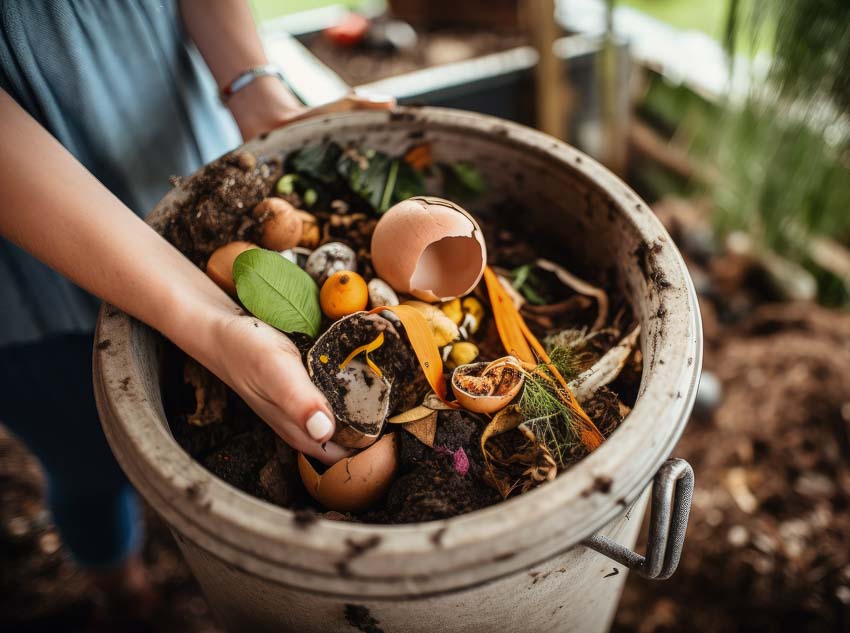Composting is the process of converting organic waste like food scraps and yard debris into a nutrient-rich fertilizer for your garden. Learning how to compost is easy, and it’s one of the best things you can do for your plants and the environment. In this beginner’s guide, you’ll learn all the composting basics to get started recycling your organic waste into “black gold” for your garden.
Benefits of Composting
Composting provides numerous benefits:
- Produces a free, nutrient-rich fertilizer and soil amendment that improves soil structure and texture. It contains macro and micronutrients plants need to thrive.
- Reduces the amount of waste sent to landfills by up to 30%, since organic materials make up a good portion of household waste.
- Helps plants withstand diseases, pests, and drought conditions better. Its organic matter helps retain soil moisture.
- Suppresses plant diseases and harmful soil fungi when added to garden beds.
- Reduces or eliminates the need for chemical fertilizers. Compost contains slow-release nutrients plants can naturally take up.
- Improves soil drainage and aeration for healthier root systems.
- Reduces soil erosion and runoff when added to garden beds.
- Saves money since you can make compost at home for free.
- Creates a natural fertilizer that doesn’t contain chemicals found in many store-bought plant foods.
Composting Methods
There are a few different methods you can use to compost at home. The basic types include:
Compost Bin or Pile
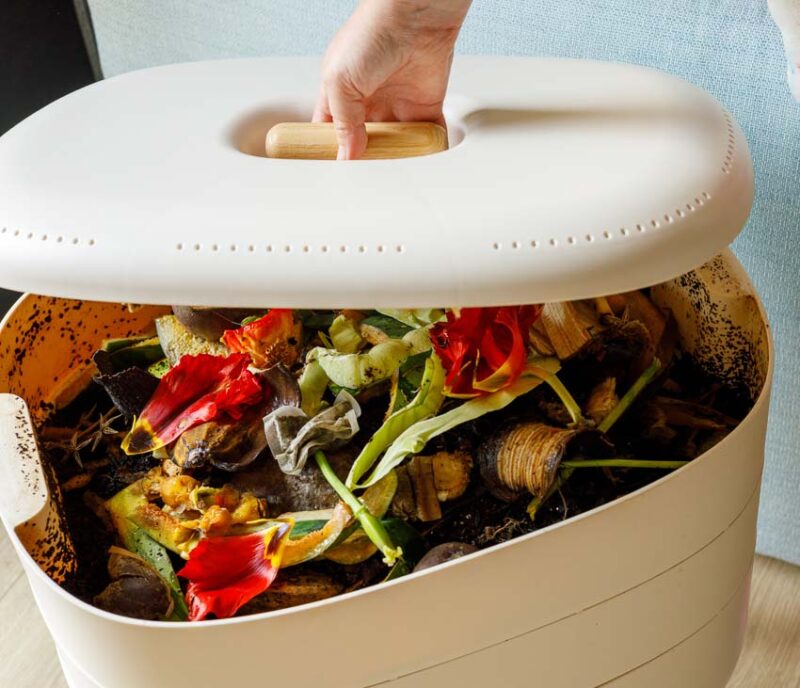
This involves placing compost materials in an open pile or bin. You’ll turn and mix the pile periodically to aerate it as the materials break down. Using a bin helps keep the pile neat and retains heat and moisture. Bins can be bought from your local garden center, or you can build your own from materials like wood, wire mesh, and plastic.
Begin by creating a 4-5 foot wide base of brush or wood chips to allow air circulation under the pile. Add composting materials on top, keeping the pile moist. Turn and mix the pile with a pitchfork every 7 to 10 days. In 2 to 3 months, you should have usable compost.
Tumbler Composter
Tumbler composters are closed drums that sit elevated on a stand. You load compost materials through an opening, then turn or “tumble” the drum periodically. The tumbling aerates the compost. Since they are enclosed, tumblers retain heat and moisture well.
Compost can process faster, in as little as 2 to 4 weeks in some cases. Tumblers can be rotated easily to mix contents. However, capacity is more limited compared to open bins and piles.
Vermicomposting
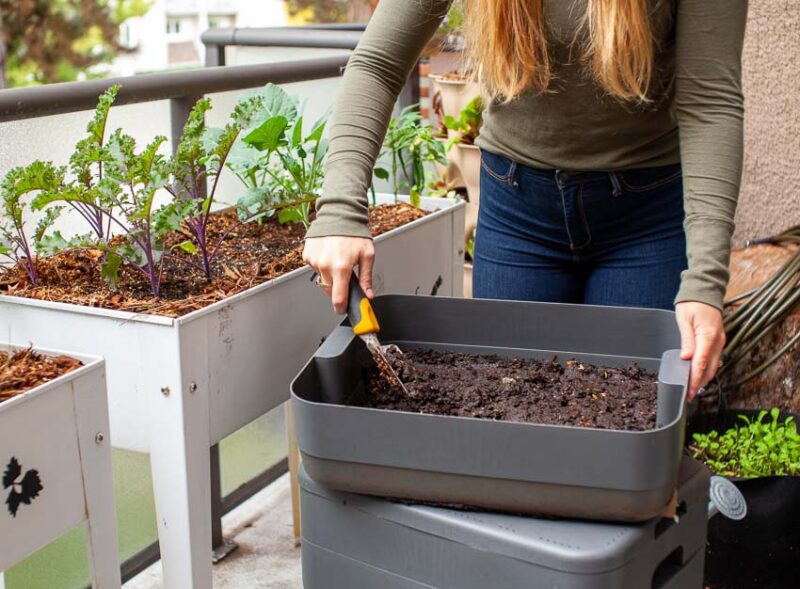
Vermicomposting uses red wiggler worms to break down organic matter. You house worms in bins with bedding and feed them food scraps. The worms produce castings, which are full of nutrients.
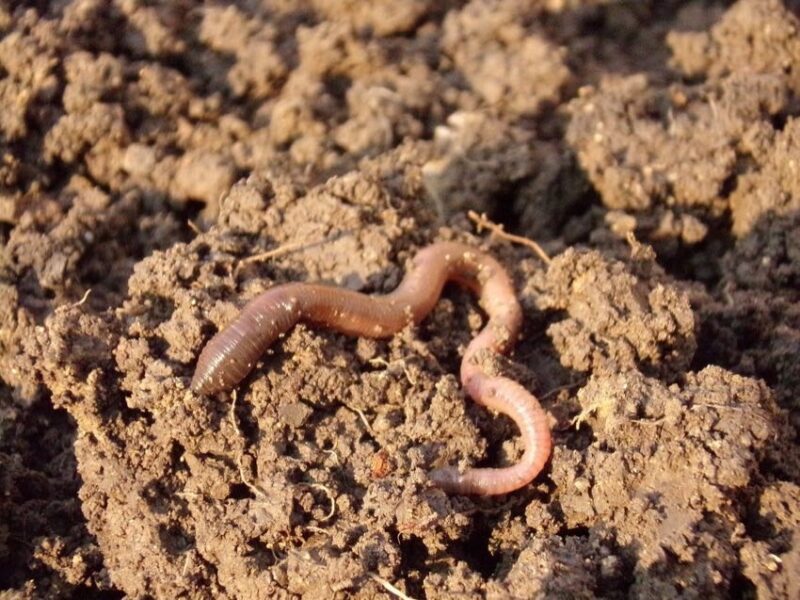
Maintaining the right moisture and food supply for the worms produces compost in 2 to 3 months. Worm bins can work well for kitchen scraps in apartments or homes with limited space. However, you need to maintain proper conditions in worm bins to keep the worms healthy.
Hot Composting
This fast method involves building a large pile, at least 3x3x3 feet. Mixing a proportion of carbon and nitrogen-rich materials generates heat to speed decomposition. Use a pitchfork to stir the pile daily to dissipate heat and redistribute materials.
The high temperatures kill pathogens and weed seeds. Hot compost can process completely in 4 to 6 weeks. However, frequent monitoring and turning is required.
Trench/Sheet Composting
For this method, you bury kitchen scraps or other compostables directly in your garden beds. Dig trenches 8 to 12 inches deep in garden beds and mix scraps with soil. Bury about 2 to 4 inches below the surface.
The materials will compost over 2 to 3 months, providing nutrients right where your plants can use them. You can also bury them under sheet layers of cardboard or newspaper before planting.
Things You Should Compost
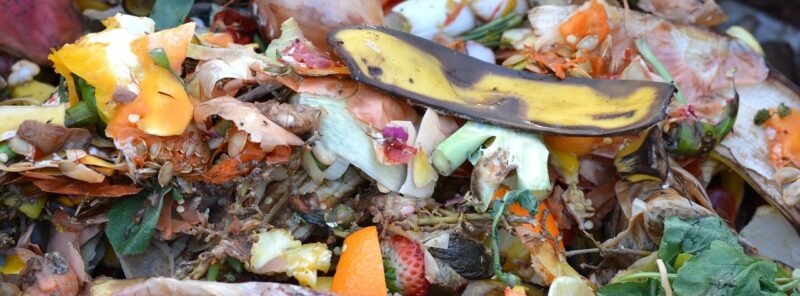
- Fruit and vegetable peels, skins, and scraps
- Coffee grounds and tea bags
- Eggshells
- Shredded newspaper
- Cardboard boxes and toilet paper tubes
- Paper towels and napkins
- Cotton and wool rags
- Dryer and vacuum cleaner lint
- Hair and fur
- Grass clippings
- Leaves, straw, and garden debris
- Wood chips, sawdust, and shavings
- Hay and alfalfa meal
- Branches, twigs, and small sticks broken into pieces
Basically, any organic materials like plant trimmings, certain paper products, and foods are suitable for composting. To speed decomposition, shred or chop large pieces, and moisten dry materials like paper or leaves when adding to your pile or bin.
Things You Should Not Compost

While most organic waste breaks down well, some items should be avoided:
- Meat, fish, bones, or dairy products, which can attract pests
- Grease, oil, or butter-containing foods
- Pet or human waste (feces, litter, diapers)
- Invasive weeds or noxious plant clippings, as seeds may survive and spread
- Diseased plant materials
- Sawdust, leaves, grass, or yard waste from chemically treated lawns or gardens
- Charcoal ash, coal, or briquettes
- Non-biodegradable materials like plastic or synthetic fibers
Anything containing animal products, chemicals, or synthetic materials cannot be broken down. Dispose of any non-compostable items with regular waste.
Understanding Carbon to Nitrogen Ratios in Composting
Understanding and managing the carbon-to-nitrogen ratio is a fundamental aspect of successful composting. This is the backbone that ensures a vibrant microbial community, facilitating a rapid and odor-free decomposition process.
It involves a symbiotic relationship between carbon, the energy source, and nitrogen, the building block for microbial growth, working harmoniously to break down organic matter into a nutrient-rich soil conditioner.
The Significance of Carbon and Nitrogen
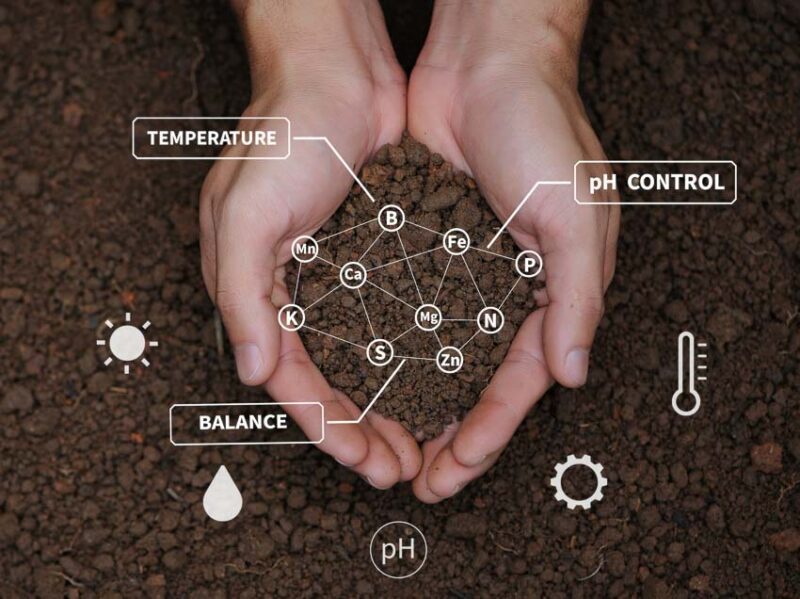
The decomposition process in a compost pile is facilitated by microorganisms such as bacteria, fungi, and protozoa, along with larger organisms like earthworms and insects. These organisms feed on the organic matter in the compost, breaking it down into simpler substances.
Carbon serves as a primary energy source for these organisms, while nitrogen is crucial for their growth and reproduction.
A correct balance of carbon and nitrogen is vital to maintaining a healthy microbial population, fostering a quicker and odor-free process. Generally, a C:N ratio of about 25-30:1 is considered ideal. This balance ensures a conducive environment for microbial activity, avoiding issues such as unpleasant smells, pests, and slow decomposition.
Carbon-Rich “Brown” Materials
In the composting context, carbon-rich materials are often termed “browns.” These include dry leaves, straw, paper, cardboard, and even sawdust. Browns are high in carbon but low in nitrogen, and they are essential in providing the compost with a loose structure that facilitates aeration, avoiding compaction of the pile, which can slow down the decomposition process.
Incorporating the right amount of browns helps in achieving a fluffy, aerated compost pile, preventing anaerobic conditions that can lead to foul smells and ineffective composting.
Nitrogen-Rich “Green” Materials
On the other end of the spectrum are nitrogen-rich or “green” materials, such as grass clippings, kitchen scraps, including fruit peels and vegetable scraps, and coffee grounds. Green materials are high in nitrogen and low in carbon, contributing significantly to the growth and reproduction of the microbial population in the compost pile.
A substantial supply of greens ensures a vibrant microbial community, but an excess can lead to a slimy, smelly compost pile. Thus, it’s essential to balance the greens with an adequate amount of browns to facilitate a healthy composting process.
Achieving the Ideal C:N Ratio
Achieving the perfect C:N ratio is more art than science. It involves gauging the types and quantities of materials added to your compost pile. While the ideal ratio stands at 25-30:1, a reasonable range to work within is between 20:1 and 40:1. This ratio ensures that the composting process will be efficient, without the risk of creating a hostile environment for microbial life.
Maintaining the right balance involves a continual adjustment, adding more browns if the pile becomes too wet or starts to smell, or incorporating more greens if the decomposition seems to stall.
Adjusting C:N Ratios
In real-world scenarios, achieving the perfect C:N ratio may seem like chasing a moving target, primarily because different materials have varying C:N ratios. For example, sawdust has a high C:N ratio of around 500:1, while vegetable scraps have a much lower ratio.
The key to adjusting C:N ratios lies in understanding the inherent C:N ratios of different materials and mixing them in appropriate proportions to achieve the desired balance. It may involve some trial and error initially, but with time, one develops a knack for getting it right.
Monitoring and Maintaining Your Compost Pile
A well-managed compost pile not only exhibits a healthy decomposition process but also wards off pests and prevents the emanation of foul odors. Regularly turning the pile ensures even decomposition, avoiding hot spots and facilitating adequate aeration.
Monitoring the temperature of your compost pile can be a great indicator of its health. A well-balanced compost pile will maintain a temperature of around 130-160°F (55-70°C), which is the optimal range for microbial activity and for killing weed seeds and pathogens.
As you venture into the world of composting, remember that patience can be your greatest ally. Success means nurturing a living ecosystem that, when well-balanced, can transform waste into black gold for your garden, promoting sustainable gardening and contributing positively to the environment.
FAQs About How to Compost
What is the ideal carbon-to-nitrogen ratio for compost?
The ideal carbon to nitrogen (C:N) ratio for a compost pile is about 25-30:1. This ratio fosters a conducive environment for microbial activity, facilitating faster decomposition. A balanced C:N ratio ensures that the compost pile does not emit bad odors and breaks down organic matter efficiently to produce nutrient-rich compost for your garden.
What materials provide carbon vs. nitrogen?
Carbon-rich materials, often called “browns,” include items like dried leaves, straw, paper, and cardboard. Nitrogen-rich materials, known as “greens,” include kitchen scraps like vegetable peels, coffee grounds, and grass clippings. Striking a balance between these materials helps in achieving the ideal C:N ratio for your compost pile.
How do I know when compost is ready to use?
Compost is ready to use when it attains a soil-like texture, dark color, and a pleasant earthy smell. The original organic materials should be unrecognizable, and the compost should be cool to the touch.
This process usually takes between 2 and 4 months, depending on the conditions and materials used. Ensure it is fully decomposed to provide optimum nutrients and benefits to your soil.
What particle size should I break compost materials into?
Breaking compost materials into smaller particles, around 1 to 2 inches in size, can facilitate faster decomposition because it increases the surface area available for microbial activity. Smaller particles allow for better aeration and moisture retention in the compost pile, fostering a healthy decomposition environment.
How do I maintain the right moisture level?
Maintaining the right moisture level involves ensuring your compost pile is as damp as a wrung-out sponge. Add water gradually if the pile is too dry, or add dry, carbon-rich materials if it is too wet. The goal is to maintain moisture without making the pile waterlogged to encourage efficient decomposition.
How often should I turn and mix the compost?
Turning and mixing your compost pile should be done roughly every 3 to 7 days to foster adequate aeration and facilitate even decomposition. Regular turning helps in distributing heat evenly and preventing the development of bad odors, creating a favorable environment for beneficial microorganisms.
How do I prevent unpleasant odors from the compost?
To prevent unpleasant odors, maintain a proper carbon-to-nitrogen ratio, and ensure good aeration by turning the pile regularly. Avoid putting in diseased plants, dairy, meats, and oily foods as they can produce foul smells and attract pests. Maintaining the right moisture level is also key to preventing bad odors.
What size and type of compost bin do I need?
The size and type of compost bin depend on the amount of compostable waste you generate and the space available. A common household size is a bin with a volume of one cubic yard. Bins can be open or closed, with closed bins being more suitable for smaller spaces due to better odor and pest control.
Where is the best location to compost?
The best location to compost is a spot that is level, well-drained, and accessible. It should be placed in a location where it can receive a good amount of sunlight to help maintain optimum temperatures for decomposition. The spot should be convenient for adding materials to the bin and turning the compost pile.
How do I compost in winter?
Composting in winter involves protecting your compost pile from freezing temperatures by insulating it with a thick layer of browns like straw or leaves. Maintaining a larger pile can help retain heat. Turning the pile occasionally and maintaining the right moisture levels are key to composting in cold weather.
What are the small white bugs in my compost?
Small white bugs in your compost are likely springtails, which are harmless and even beneficial, aiding in the decomposition process. These microorganisms feed on decomposing matter, contributing to breaking down organic material into nutrient-rich compost.
Ensuring a balanced C:N ratio and regular turning will help maintain a healthy compost environment.

